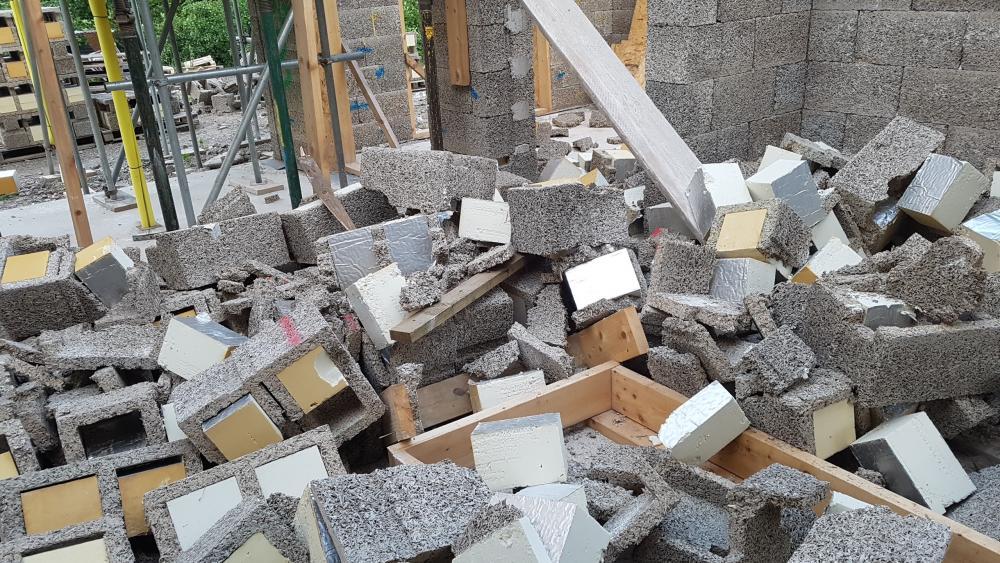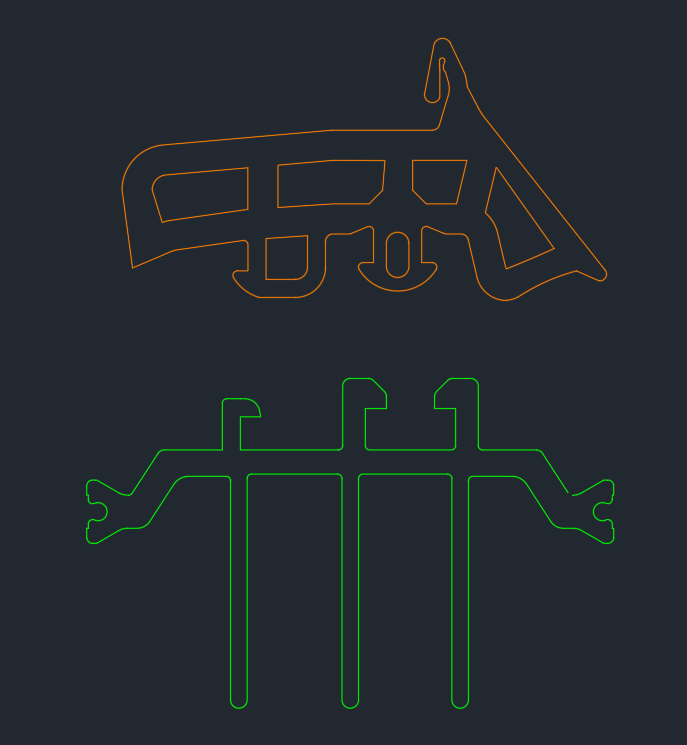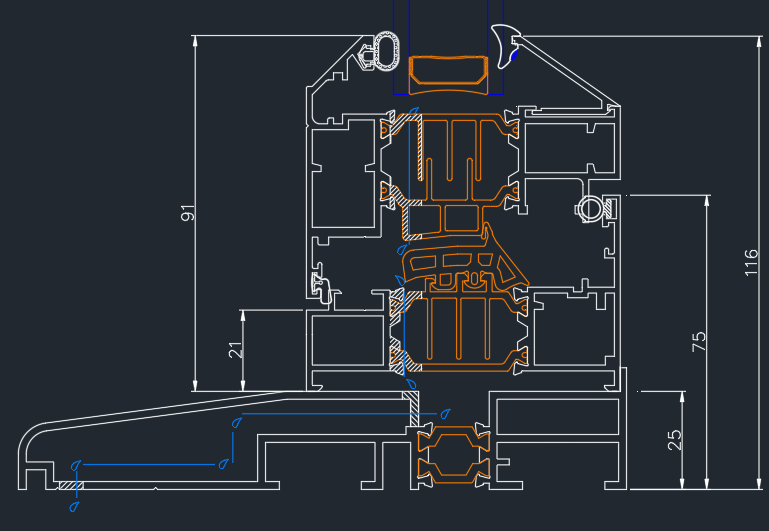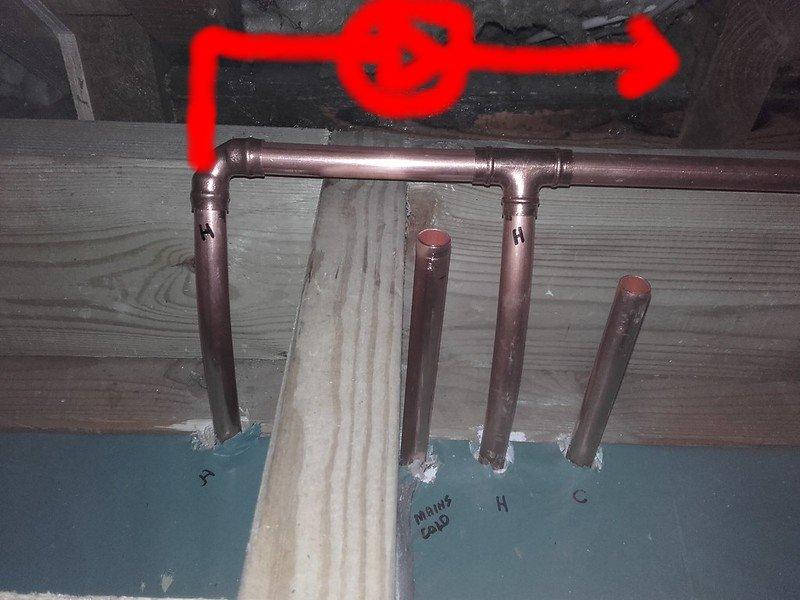Leaderboard
Popular Content
Showing content with the highest reputation on 02/28/21 in all areas
-
Today was the day - after a lot of taping etc two years ago we found out today how good it all was. I've not had the paperwork through yet but the tester said the Q50 reading was 1.29 - not sure what this means but the air changes per hours came out at 1.1. Well pleased with that. Not too sure what others on this forum have achieved. I suspected it must be Q good because the house keeps warm with very little heat input. The weak points were french doors (bad - need to see how to adjust them) - 2 pairs of these. And there is a leak somewhere on an internal wall (?) but I've decided that we are not going to try to find them. Just need to move in now. Hope everyone is well, CC4 points
-
No, but I do live on my own, but 5 adults in neighbours house and they seem clean and tidy. If I needed more hot water, I could fit a larger cylinder, cheaper than a new boiler. Read my rely about the flow rate, it is enough to run two showers as it is, easy to fit another pump to run more, but I would be running out rooms to fit showers into. How well does a combi boiler work in a power cut. At least I have some stored hot water, definitely good for 2 days, probably 3. The flow rate of most, cheap, combi boilers is pretty pitiful. Had one in my old house and it took 15 minutes to fill the bath. This is pretty pointless really, you do not understand, and cannot be bothered to learn the differences in the technology, you just have a very backwards view on heat pumps. You assume they are low powered, only low temperature, are super expensive to buy and install, while any gas combi boiler has infinite capabilities, gives 100% reliable service, costs the same as a week in a Travel Lodge (do they use combi boilers in hotels?) and produce less pollution. I am not going to change your mind, but I will pick you up every time you say 'they don't work' or similar, as that is just nonsense, and I have no tolerance of people that talk nonsense.4 points
-
I have said before, an ASHP will not beat the cost of a mains gas combi boiler. If you have mains gas available and are not bothered about CO2 emissions, stick with your combi. In a well insulated modern house an ASHP is a good solution where mains gas is not available and you need to meet modern building regs / SAP for a new build and the ASHP will give you heating bills close to mains gas prices. Re heat time of DHW is the only issue with hot water. That can be managed, though 5 consecutive baths would be a challenge. I am not advocating anyone to rip out a gas combi from an old house and replace it with an ASHP as the results are likely to disappoint. And this is what gives a heat pumps a bad name.3 points
-
biggest mistake ive learned is never to take any notice whatsoever of the architect once the build has started. What's on paper doesn't always translate to reality. Find good trades, pay them well and use their knowledge wisely.3 points
-
The Parge coat we often use is more for sound deadening I never call it an airtight coat as it gives the impression that the dry liners don’t need to seal everything So we always call it sound coat So yes any kind of slurry is fine 3-1 stipple with a stiff brush will do the job Save £££2 points
-
Well done, that's good. I did some runs of the PHPP for my house design with different air airtightness values and once you get down to around 1ach the advantages of going lower are quite small.2 points
-
The issue here is gaps in the mortar. Let's say behind one board you have a gap near the bottom and another at the top, so you get cold air coming in at the bottom, being nicely heated to say 20°C by that nice board radiator and cycling back out at the top crack. The net result is that the void behind the board is cycling heat into the void between the brick and blockwork courses. I've seen horror story FIR walk-arounds where external walls are 10° colder than they should be because of this. You can't tell it is happening until the house is built and fully heated and by that stage the cost of remediation is prohibitive. I've also seen cases where it is clear from the FIR camera that whole areas of cavity insulation have been omitted. If this happens, by this stage what realistic remediation or recompense do you have from your builder? As @joe90 says, one option is to parge the wall with a cement slurry to seal the blockwork properly. Another is to go over it with a "fine tooth comb" before it is plaster boarded out, but this level of inspection is skilled and tedious.2 points
-
Hello Eckybloke. You may not be able to do this and it may not suit you if you have young kids. Looks like your ground water flow is towards your garden. What about a small pond on your side of the fence. Make it two different depths, 1.2 - 1.5 m in one spot, 0.3m shelving to zero at the other. This leaves a bit unfrozen at depth but allows frogs and small birds to enter and bathe in the shallow water. Ask you neighbour if you can chuck the soil over the fence to create a planting bund and put some good looking but low growing trees on top of the bund to give you colour all year round, some shelter for the birds at high level and hedgehogs etc at the base. Often you'll find the pond stays partly filled all year round, great for the wildlife, you could even plant some sloe bushes on the bund and make gin. If you have a friendly neighbour then they may well be fine with this type of proposal. Sometimes it's about working with the ground water rather than trying to fight it. It will take less than a day to make the hole with a jcb which can hopefully reach over the fence too. Then you can play for months setting up the pond planting and watching the wildlife discover your garden. It may become stagnent if you over feed it but you can aerate it with small air pump.2 points
-
@Onoff a hot return on a standard cylinder can be a bit of a faff as you need a non return valve and the only place you normally can tee back into is the cold feed unless you put an Essex flange on the tank near the top. Easier than an occupancy switch is a timer that comes on 1min in 60mins from 6am - 11pm as that just circulates enough to allow it not to cool too much between pump cycles. Cheap pump ...? eBay is your friend.1 point
-
Very.... it looks like threaded pipe unions and you would be undoing it turning it up against the wall. And I’m sorry, if you’re asking this level of question then you’re not qualified to work on gas and should leave it to the professionals. Gas explosions kill.1 point
-
Ok. Try tightening it a little, then loosening a little, and repeat until it gives up fighting you. You may be lucky, but they are bonded in in the factory so they are always facing completely vertically and cannot be tweaked by the inept plumbers who would do so for a 2 minute quicker install.1 point
-
Depends how good it is. We have a yard here can literally get super clean like 35-70mm crushed concrete. I don't think you'd be able to tarmac straight ontop probably need a 2-4" layer of smaller clean stone but you'd do that when the build is finished. I wouldn't worry too much about it clogging up to the point of non permeable. A type1 would do but not a product without fines. It's not going to be any less permable than the ground below any way.1 point
-
That would remove about half a pint of dead water, probably less in actuality. What you could do is have the TMV hot inlet connected to the top of the UVC, with that going in on a 90o bend, so the mixed output of the TMV is rising vertically, and then have the hot manifold rising vertically off the TMV. That would promote natural convection into the TMV and manifold thus creating a setup that Pre-heats itself prior to hot water being drawn from the smaller, downstream pipes. Not yet heard of high energy losers, or an UVC overheating a PH, as these are all design considerations when building such a dwelling ?. Jeremy Harris stated he had such problems, but that was with a very high temp thermal store, not an UVC. That’s the single and only instance I can recall, as is no comparison model here at all. If the HRC pump is only pumping around the airing cupboard then I see no such high losses occurring, as the cupboard will attain an ambient and the delta T between the pipes and their immediate surroundings will be negligible, ergo the transfer from A>B will be hugely stunted. Fit some seals to the A/C door to promote that environment being maintained and you’ll be fine. Work out what these heaters and extra plumbing / additional points of loss & failure will amount to, and reconsider. Yes, the option of using the multipoint heater will work, but why not just improve the UVC install and improve the whole of house scenario vs invest more / lose cupboard space, and the rest of the house gets zero benefit..... The improved performance of the kitchen sink will exacerbate the issue in the rest of the house, and that would piss me off even more. 2 choices, both require money. One solves one problem, the other improves the whole of house situation. I know what I’d be doing.1 point
-
Anywhere. Just start. Everything is linked one way or another, so just make a start : it really doesn't matter where. Sleeplessness is just round the corner - go with it, don't fight it. Waste lots of time on BH - it won't be wasted really. It will give you a very good overview of what can and does go wrong and right.1 point
-
Here you are ..... One of the many steep learning curves we have experienced. More than one bollock (lets see if gonad gets through the filter ) dropped here..... Loads more images on the thread linked below. This is the thread that deals with it. 3 years later, and I can honestly say that, although traumatic at the time, a lot of good came out of it. Our bank balance hurts more than it should perhaps. But, as they say, if ya can't take a joke, don't start a self-build.1 point
-
No We do it because it’s on the spec Nearly always housing association1 point
-
1 point
-
there is no extra charge for 32mm connection and as the cost increase in MDPE is miniscule id run it in 32.1 point
-
This depends - while TF are more expensive up front, they are erected in a matter of days/weeks and you can then move on with your build. Depends how complete the package is and how valuable time is on your project. If You can get a quote from the DNO (local power supplier) for them to do the work and then see what's 'contestable' - i.e. they are ok with you doing - usually this is digging trenches, exposing the existing cable, backfilling etc. You can then get a quote from a local ground worker for those elements - add to the DNOs non contestable bit and that's your likely cost.1 point
-
1 point
-
if I understand from your photo, water is flowing into your garden from the uphill side ? French drain along boundry with perf pipe and pipe it away downhill. Add latrerals to it from the garden as well if it hangs wet. The question is where you pipe it to. Old houses pipe it into the sewer but this is frowned upon now. Where does your roof drain to ?1 point
-
impossible to know. You will have to ask them for quotes. could be £100 could be £25000 .1 point
-
Yes, mine was good, cement render instead of parge coat then Thin plaster top coat. Cement render is cheaper than hard wall for first coat! But I did parge coat between joists etc so no leakage between floors!1 point
-
New battens wouldn’t correct the bow in the roof, your roof would have settled over time, but the section between you and the neighbours wouldn’t droop as the party wall is there. TBH those tiles are very unforgiving for cutting around things like windows, it is always hard to make them look good, always looks a bit clunky.1 point
-
You mean someone to do it with hard wall ..? So a bonding coat then browning / top coat plaster (it’s plaster inside, render outside) which is the traditional way of doing it. A good plasterer should be able to do that no problem, finding a good plasterer though will be your challenge as I’ve seen some jobs that are as rough as toast when it’s not just a board and skim job.1 point
-
1 point
-
You can do it yourself. 4-1 sand cement and mix to a slurry. Cheap sweeping brush and a big plastic box and just dip, sweep, repeat ..!1 point
-
Top hung Velux size M08 give sufficient to meet the regs. Note that it must be within a set distance from the eaves and have a sill no higher that a set distance from the floor. The latter is mitigated by forming steps up to it if necessary as the response above. These steps have to be fixed in position. We made ours as an independent unit that were screwed in place to wall and floor. Even the BCO joked about us being able to remove them once we were signed off, everyone does. The next time was a new build room in roof house. That had the same M08 Velux but brought to the outer wall with Velux VFE vertical elements beneath. The window board of that formed an acceptable step for the BCO. We have had similar situations but could fulfil the regs with side hung casements with the right hinge types set in the gable ends. Most window catalogues have MOE or egress beside the model description. Velux technical has always been helpful when I have asked.1 point
-
You just have to get windows that are large enough. Mine are a little too high for regs so I have to put in a permanent shelf/step up for access.1 point
-
Pretty clear to me, that the drainage is at the front from the section detail and picture, that water that pools at the back has got nowhere to go and in a closed position should not be getting anywhere near the inner aspect of the frame. I have included a snapshot of the detail below and the blue line and water drops is what is on the drawing for drainage (available in PDF & DWG here). It is an aluminium system, it shouldn't be of great concern but at the same time. It shouldn't be happening, it's definitely not what is designed to happen according to this detail. My biggest question is this though and please remember, I'm coming at this with knowledge of windows and doors but I'm not familiar with the Origin window. From the picture you have shown three ribs are clearly visible all the way along, on top of that should be what appears to be a gasket. The picture doesn't show this at all but it does show locking keeps (however, I highly doubt the section represents the locking keeps). I have highlighted the thermally broken detail in green (shown the three ribs) and above the gasket. Is this missing (orange section)? I could be way off the mark, as I'm looking at a picture and section detail and as mentioned a caveat of I don't know the system but it looks like it is. If yes, then that would explain the problem. If yes, then the window is only sealing on outer edge and inner edge and not in the middle as shown in the section detail.1 point
-
Re the issue of cycling boilers, let's say you need 2 kW and you have a 12 kW boiler, this the boiler will be on:off on a roughly 1:5 cycle. Boilers need to be on for a decent block at a go, say 20 mins, this means that you will need to be off for 1h40 between each on and you will need a buffer tank capable of storing ~ 5kWh heat.1 point
-
With my build i specified cement render first coat and plaster second coat so I am told but I still don’t like “hollow” walls, solid all the way fir me, fix/hang anything anywhere!!! (Plus I am an advocate of “thermal mass ?)1 point
-
Call the grid to say you think you can smell gas, when the chap arrives ask him if he could do a bit of cash in hand work and move the meter. Job done.1 point
-
Only Cadent or another utility provider can do it (such as Crown Utilities). A plumber - even GSR - cannot touch the supply side pipework, it’s an offence to interfere with the gas pipework and it is not something they should be anywhere near.1 point
-
On the subject of dot and dab I would not have it in our house, I much prefer solid render/plaster but as Terry says above you could “parge” the walls (seal them with a cement slurry mix) then batten or dot and dab if that’s what you really want.1 point
-
Consider a double wall between the office and the master bedroom with the void split say 70:30 as built-in wardrobe for the MBR and shelving for the office. Such built-in features are part of the fix of the house and are VAT zero-rated. They also work much better than free standing equivalents, IMO.1 point
-
+1 on the main issue with dot & dab being air-tightness. Builders tend to botch this by using the plasterboard as the main air-tightness membrane, and if you've got any cracking in or voids in the blockwork mortar lines (which you nearly always do) then you get convection cycling behind the plasterboard which just pumps heat out of the house. There are some good FIR camera walk-arounds of which show this. Far better to directly plaster or alternatively seal the block work and then batten out to carry the board. We keep our house at ~ 23 °C and I accept that we may be paying a 15-20% premium for this but that's 15% of a small bill anyway. The problem of 0.18 vs 0.12 is a more subtle one of tipping points. We loose minimal heat through our walls so we don't have or need any installed form of CH on the upper floors: no radiators, boilers or CH plumbing and this saved a lot of installation complexity and cost. You should use a Jeremy-style heating spreadsheet and have a play with the parameters and sensitivities and see what the correct mix / trade-offs is for you. Having a truly energy efficient house (if done properly) doesn't add materially the overall costs because of the consequential savings that you can make. Architects will design crappy performance houses, builders will build sloppily because that is what they are used to, and building to an energy efficient standard is just an inconvenience for them: this is the culture of the UK construction industry. But you will need to live with the consequences every day after you move in.1 point
-
I should probably use a thermostat, but I just run it open circuit at 16 deg C, and switch it into cooling mode manually when needed. Usually only bother if we have a run of hot weather predicted, as it takes a while for the house to get hot. If you plan to use a thermostat, bear in mind that when cooling you'll need to have it trigger when the temperature goes above a setpoint, whereas for heating it's the other way around. I don't know whether some thermostats have N/O and N/C outputs so you could have one pair connected for heating and the other for cooling, and then just change the mode at the ASHP on a seasonal basis. Alternatively, use a separate cooling thermostat. What's their basis for saying this? I only have a 5kW unit (which has even lower cooling capacity) but I wouldn't be without it during hot periods in summer. It's extremely pleasant walking around on cool floors when it's really hot outside. People who come into our house for the first time at times like this are always stunned at how pleasant it is. It's a very different feeling to cooling via air conditioning.1 point
-
1 point
-
1 point
-
Biggest thing to help would be a wall plate vs cutting the joist ends into the inner leaf of block. Then, a job you can do yourself, is to parge the entire internal face of the inner leaf with a cement slurry mix, applied by brush in most instances, to seal the pores of the block. Chases for cabling are not necessary if you are dabbing boards on, but the boxes will need to be recessed according to final finish depth of boards. If you do have to chase, then they get fully filled back in to maintain airtightness.1 point
-
26mm for 5.5m is roughly 2.65l 16mm for 5.5m is roughly 1.11l So your total dead leg is approx. 3.76l ( assuming my maths is correct!) That would tie in with your 4l, so it looks like ypu are simply pulling the dead leg through at 8.89l per minute flow rate. No issue with the TMV or balancing, just the distance from the tank to the tap causing the issue.1 point
-
It's on Wayback. https://web.archive.org/web/20200923193339/http://www.mayfly.eu/1 point
-
No PV. Annual bill is about £1400. DHW is by immersion and cooker is electric... plus it seems every single electrical device in the house is left switched on permanently ?0 points
-
Jesus Christ fella's!! I only stepped away for a few hours!! ? Thanks for the info on the render/plaster coat. I think this is what I'll do as well as a slurry coat between the floor joists - thanks. Oh, I don't have access to gas I'm afraid. I am happy to consider a ASHP, though I do have some reservations, but contrary to an earlier suggestion, I do want radiators upstairs and UFH downstairs. I know 2 professional house builders and both have said that upstairs, with a timber floor, the noise associated UFH expansion and retraction is not worth it. I saw in another thread on here somewhere some radiators that can be run with an ASHP that blow hot or cold which on the face of it looks almost too good to be true. I would like to use PV preferably using or storing all the energy from it and not exporting at all to the grid. This is why I was originally considering a Sunamp - stores energy and avoids buying a battery bank. I do like the idea of being able to cool, especially as it would probably be very cheap in the summer with the PV. Either way, gas is not available and I'd just like ideas of alternatives that will provide plenty of heat without costing a fortune to run and not be too horrendous to purchase. I'm interested if anyone has good experiences with anything else, ASHP's are often the most obvious choice but I don't want to just assume it's the best solution open to me. Thanks for all the input.0 points
-
I'm not as think as you drunk I am btw... Repeated the test this morning in the bathroom and it's nominally 1m before the basin tap gets even warm then 1m15s until hot. Up in the loft I have these pipes dropping down. Hot comes a fair distance from the cylinder in 22mm then drops to 15mm. To get quicker hot is it "just" a case of putting a T in then a pump back (to where?). Triggered by an occupancy switch? There'll still of course be a short dead leg from here the couple of metres down inside the wall to the basin / bath: Can anyone recommend a cheap pump? Edit: I do feel as I'm being somewhat cajoled into this...0 points
-
0 points
-
No. Life is too short it’s not a bloody Chippendale.0 points
-
Great moments - lots of them, particularly this huge sense of delight and relief when an item which you purchased on sale months ago is finally delivered - AND IT FITS!!! When your worktops turn out exactly as you designed them - even better! When the flow of the house is so nice you just love walking around. When the utility is everything you have ever dreamt of. When the sunlight starts reflecting from the mosaic panel which you have strategically placed there hoping it would work - and it did! Generally, we are still having this very great moment when I sit in the garden and look at the house and say to myself: "8875ng hell, we did build this!!".? Heart-sinking-cold-sweat moments also were in abundance: when our first team of scaffolders turned out to be a scum gang and got us into a massive row with our very sensitive neighbours and refused to take the scaffolding down to re-do it correctly. When the careless builders left Knauf slab insulation laying around on site and left and we got a call at 00:30am from neighbours saying our insulation is flying along the street like in a ghost movie. When a freak storm shuttered the low boundary wall and it collapsed onto the neighbours' car.When the builders stopped building and effectively left with our money. When the LPA killed my so-well-designed sunroom as it brought the ridge height 500mm above neighbours treshold. When walls started to crack due to wrongly placed steelwork. When the boiler drowned in condensation and nearly died. Oh, that's a big one - when BCO said that our front door (£3k!) was too narrow to pass the regulations, and this was not picked up neither by our shit of a PM nor by the all-awards-winning-grand-design windows company.... ?0 points
This leaderboard is set to London/GMT+01:00















.jpg.c21f3ac78c9b7efd90cbdcb312744dc5.thumb.jpg.7adcad4c0e384f5ecd7d56b0618df6e5.jpg)

